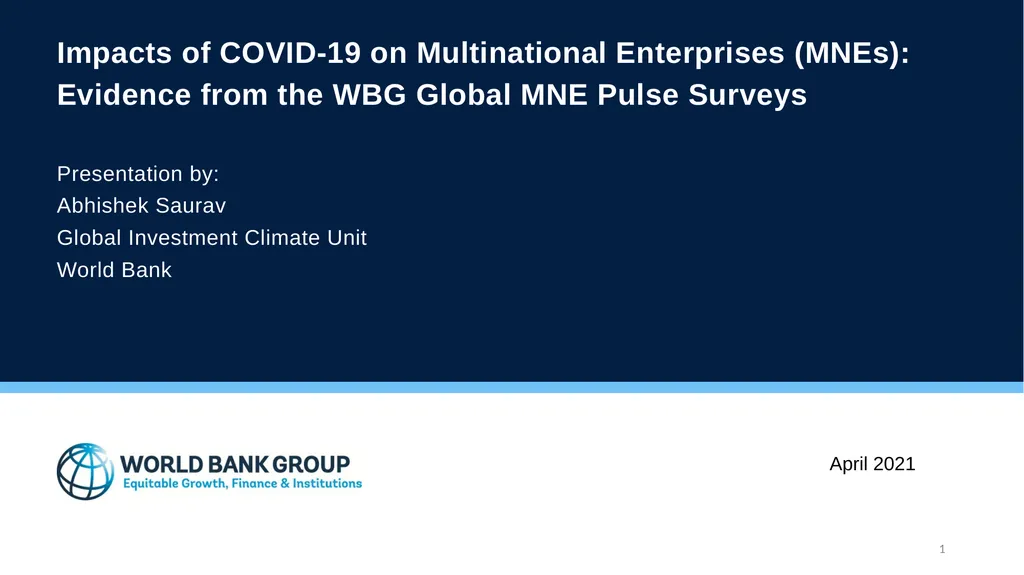
Author : myesha-ticknor | Published Date : 2025-06-27
Description: Impacts of COVID-19 on Multinational Enterprises (MNEs): Evidence from the WBG Global MNE Pulse Surveys Presentation by: Abhishek Saurav Global Investment Climate Unit World Bank April 2021 1 Outline 2 Background on the MNE Pulse Survey WeDownload Presentation The PPT/PDF document "" is the property of its rightful owner. Permission is granted to download and print the materials on this website for personal, non-commercial use only, and to display it on your personal computer provided you do not modify the materials and that you retain all copyright notices contained in the materials. By downloading content from our website, you accept the terms of this agreement.
Here is the link to download the presentation.
"Impacts of COVID-19 on Multinational Enterprises"The content belongs to its owner. You may download and print it for personal use, without modification, and keep all copyright notices. By downloading, you agree to these terms.













